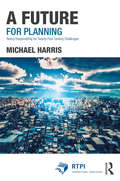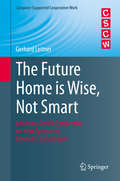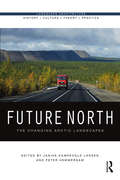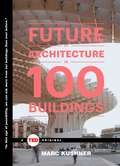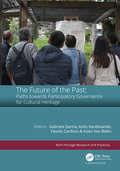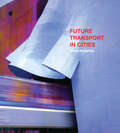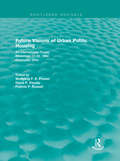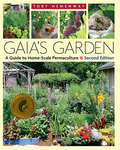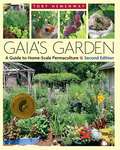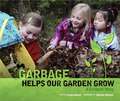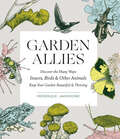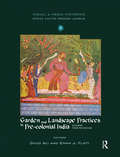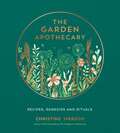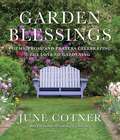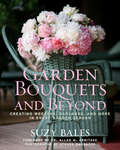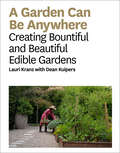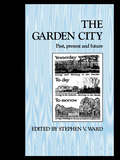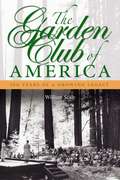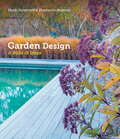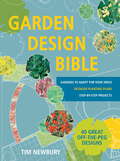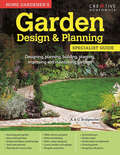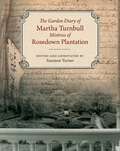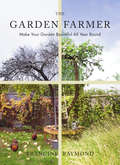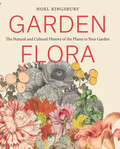- Table View
- List View
A Future for Planning: Taking Responsibility for Twenty-First Century Challenges (RTPI Library Series)
by Michael HarrisAs well as being spatial, planning is necessarily also about the future – and yet time has been relatively neglected in the academic, practice and policy literature on planning. Time, in particular the need for longer-term thinking, is critical to responding effectively to a range of pressing societal challenges from climate change to an ageing population, poor urban health to sustainable economic development. This makes the relative neglect of time not only a matter of theoretical importance but also increasing practical and political significance. A Future for Planning is an accessible, wide-ranging book that considers how planning practice and policy have been constrained by short-termism, as well as by a familiar lack of spatial thinking in policy, in response to major social, economic and environmental challenges. It suggests that failures in planning often represent failures to anticipate and shape the future which go well beyond planning systems and practices; rather our failure to plan for the longer-term relates to wider issues in policy-making and governance. This book traces the rise and fall of long-term planning over the past 80 years or so, but also sets out how planning can take responsibility for twenty-first century challenges. It provides examples of successes and failures of longer-term planning from around the world. In short, the book argues that we need to put time back into planning, and develop forms of planning which serve to promote the sustainability and wellbeing of future generations.
The Future Home is Wise, Not Smart
by Gerhard LeitnerThis book introduces the concept of the wise home. Whilst smart homes focus on automation technologies, forcing users to deal with complex and incomprehensible control and programming procedures, the wise home is different. By going beyond intelligence (or smartness) the wise home puts technology in the background and supports explicit (enhanced user-experience) as well as implicit (artificial intelligence) interaction adequate to the end-user's needs. The theoretical basis of the wise home is explored and examples for its application for future living are presented based on empirical studies and field work carried out by the author. Principles of HCI and the meaning of the home from differing scientific perspective are discussed and a research model (based on the concept of user experience (UX)) and iterations is introduced. This has resulted in field deployment guides being produced through a systematic development process. The Future Home is Wise, not Smart will be essential reading to home system developers, designers and researchers, responsible for smart home deployment or Ambient Assisted Living (AAL) who will get insights on how to follow a novel approach in developing and adapting smart home systems to their users' needs. Students with an interest in software design for pervasive systems will benefit by receiving information on how to develop and customise systems for the specific needs of living environments.
Future North: The Changing Arctic Landscapes (Landscape Architecture: History - Culture - Theory - Practice)
by Janike Kampevold Larsen Peter HemmersamThe changing Arctic is of broad political concern and is being studied across many fields. This book investigates ongoing changes in the Arctic from a landscape perspective. It examines settlements and territories of the Barents Sea Coast, Northern Norway, the Russian Kola Peninsula, Svalbard and Greenland from an interdisciplinary, design-based and future-oriented perspective. The Future North project has travelled Arctic regions since 2012, mapped landscapes and settlements, documented stories and practices, and discussed possible futures with local actors. Reflecting the multidisciplinary nature of the project, the authors in this book look at political and economic strategies, urban development, land use strategies and local initiatives in specific locations that are subject to different forces of change. This book explores current material conditions in the Arctic as effects of industrial and political agency and social initiatives. It provides a combined view on the built environment and urbanism, as well as the cultural and material landscapes of the Arctic. The chapters move beyond single-disciplinary perspectives on the Arctic, and engage with futures, cultural landscapes and communities in ways that build on both architectural and ethnographic participatory methods.
The Future of Architecture in 100 Buildings (TED Books)
by Marc KushnerThe founder of Architizer.com and practicing architect draws on his unique position at the crossroads of architecture and social media to highlight 100 important buildings that embody the future of architecture.We're asking more of architecture than ever before; the response will define our future. A pavilion made from paper. A building that eats smog. An inflatable concert hall. A research lab that can walk through snow. We're entering a new age in architecture--one where we expect our buildings to deliver far more than just shelter. We want buildings that inspire us while helping the environment; buildings that delight our senses while serving the needs of a community; buildings made possible both by new technology and repurposed materials. Like an architectural cabinet of wonders, this book collects the most innovative buildings of today and tomorrow. The buildings hail from all seven continents (to say nothing of other planets), offering a truly global perspective on what lies ahead. Each page captures the soaring confidence, the thoughtful intelligence, the space-age wonder, and at times the sheer whimsy of the world's most inspired buildings--and the questions they provoke: Can a building breathe? Can a skyscraper be built in a day? Can we 3D-print a house? Can we live on the moon? Filled with gorgeous imagery and witty insight, this book is an essential and delightful guide to the future being built around us--a future that matters more, and to more of us, than ever.
The Future of the Past: Paths towards Participatory Governance for Cultural Heritage
by Gabriela GarcíaThe Future of the Past is a biennial conference generally carried out during the commemoration date of the incorporation of Santa Ana de Los Ríos de Cuenca Ecuador as a World Heritage Site (WHS). It initiated in 2014, organized by the City Preservation Management research project (CPM) of the University of Cuenca, to create a space for dialoguing among interested actors in the cultural heritage field. Since then, this space has served to exchange initiatives and to promote coordinated actions based on shared responsibility, in the local context. The third edition of this conference took place in the context of the 20th anniversary of being listed as WHS and a decade of CPM as the Southern host of the PRECOM³OS UNESCO Chair (Preventive Conservation, Maintenance and Monitoring of Monuments and Sites). For the very first time, and thanks to the collaboration with the Raymond Lemaire International Centre for Conservation of the University of Leuven (Belgium), the conference expanded its local scope. On this occasion, contributions reflected round a worldwide challenge in the cultural field: revealing the paths towards participatory governance of cultural heritage. Participatory governance is understood as institutional decision-making structures supported by shared responsibilities and rights among diverse actors.
Future Transport in Cities
by Brian RichardsCities around the world are being wrecked by the ever-increasing burden of traffic. A significant part of the problem is the enduring popularity of the private car - still an attractive and convenient option to many, who turn a blind eye to the environmental and public health impact. Public transport has always seemed to take second place to the car, and yet alternative ways of moving around cities are possible. Measures to improve public transport, as well as initiatives to encourage walking and cycling, have been introduced in many large cities to decrease car use, or at least persuade people to use their cars in different ways.This book explores many of the measures being tried. It takes the best examples from around the world, and illustrates the work of those architects and urban planners who have produced some of the most significant models of "transport architecture" and city planning. The book examines the ways in which new systems are evolving, and how these are being integrated into the urban environment. It suggests a future where it could be mandatory to provide systems of horizontal movement within large-scale development, using the analogy of the lift, upon which every high-rise building depends. In so doing, future cities could evolve without dependence on the private car.
Future Visions of Urban Public Housing: An International Forum, November 17-20, 1994 (Routledge Revivals)
by Wolfgang F. Preiser David P. Varady Francis P. RussellFirst published in 1994, this book brings together the papers presented at the International Forum on ‘Future Visions of Urban Public Housing’ held on November 17-20, 1994 in Cincinnati, Ohio. Participants included public housing officials, academics, practitioners and public housing residents who came together to debate, compare and analyse practices and issues in urban and public housing in industrialised nations. The 55 collected papers address the following key topics: public housing policy; comprehensive neighbourhood planning for public housing; public housing in the urban design context; quality of design standards and guidelines for public housing; resident participation and enhanced self-sufficiency in public housing; public housing alternatives; revitalising and rehabilitating public housing; the Elderly, Children, and special populations in public housing. The findings suggest new directions for policy and agendas for action.
Gaia's Garden
by Toby HemenwayThe first edition of "Gaia's Garden," sparked the imagination of America's home gardeners, introducing permaculture's central message: Working with Nature, not against her, results in more beautiful, abundant, and forgiving gardens. This extensively revised and expanded second edition broadens the reach and depth of the permaculture approach for urban and suburban growers. Many people mistakenly think that ecological gardening, which involves growing a wide range of edible and other useful plants, can take place only on a large, multiacre scale. As Hemenway demonstrates, it's fun and easy to create a backyard ecosystem, by assembling communities of plants that can work cooperatively and perform a variety of functions, including: Building and maintaining soil fertility and structure Catching and conserving water in the landscape. Providing habitat for beneficial insects, birds, and animals. Growing an edible "forest" that yields seasonal fruits, nuts, and other foods. This revised and updated edition also features a new chapter on urban permaculture, designed especially for people in cities and suburbs who have very limited growing space. Whatever size yard or garden you have to work with, you can apply basic permaculture principles to make it more diverse, more natural, more productive, and more beautiful. Best of all, once it's established, an ecological garden will reduce or eliminate most of the backbreaking work that's needed to maintain the typical lawn and garden.
Gaia's Garden: A Guide to Home-scale Permaculture
by Toby Hemenway"Gaia" (not in the glossary) refers to the view that the Earth is a living, interconnected organism. The associate editor of The Permaculture Activist, who gardens in Southern Oregon, treats gardens as backyard ecosystems. The book includes organic garden design illustrations, and such useful information as the differences between immature and mature ecosystems, a garden designer's checklist, plants for attracting wildlife, and resources. Annotation c. Book News, Inc. , Portland, OR (booknews. com)
Garbage Helps Our Garden Grow: A Compost Story
by Linda GlaserWhat is that garbage doing next to the garden? It's not garbage. It's compost! Amazing things happen inside a compost bin. In go banana peels, grass clippings, and even an old jack-o'-lantern. Out comes compost. The compost goes into the garden to make the soil rich for new plants. Compost is good for the earth. Composting also helps us make less garbage. In this book, you can watch as one family makes compost for their garden and also learn how to start your very own compost bin!
Garden Allies: The Insects, Birds, and Other Animals That Keep Your Garden Beautiful and Thriving
by Frederique Lavoipierre"Explains how your garden can be a thriving, balanced community that gives more to your landscape than it takes." —Douglas W. Tallamy, author of The Nature of Oaks and Nature&’s Best Hope The birds, mammals, reptiles, and insects that inhabit our yards and gardens are overwhelmingly on our side—they are not our enemies, but instead our allies. They pollinate our flowers and vegetable crops, and they keep pests in check. In Garden Allies, Frédérique Lavoipierre shares fascinating portraits of these creatures, describing their life cycles and showing how they keep the garden&’s ecology in balance. Also included is helpful information on how to nurture and welcome these valuable creatures into your garden. With beautiful pen-and-ink drawings by Craig Latker, Garden Allies invites you to make friends with the creatures that fill your garden—the reward is a renewed sense of nature&’s beauty and a garden humming with life.
Garden and Landscape Practices in Pre-colonial India: Histories from the Deccan (Visual and Media Histories)
by Daud Ali; Emma J. FlattThis book presents a set of new and innovative essays on landscape and garden culture in precolonial India, with a special focus on the Deccan. Most research to date has concentrated on the comparatively well preserved gardens and built landscapes of the celebrated Mughal empire, giving the impression that they have been lacking in other times and regions. Not only does this volume provide a corrective to such assumptions, it also moves away from traditional art-historical approaches by posing new questions and exploring hitherto neglected source materials. The contributors understand gardens in two related ways: first as real or imagined spaces and manipulated landscapes that are often invested with pronounced semiotic density; and second as congeries of institutions and practices with far-reaching social ramifications for the constitution of elite societies. The essays here present a multi-disciplinary approach to the study of garden culture in precolonial India, and together suggest several new and exciting directions of enquiry for those working in the Deccan, Mughal India, and beyond.
The Garden Apothecary: Recipes, Remedies and Rituals
by Christine IversonFrom the best-selling author of The Hedgerow ApothecaryLearn how to make the most of your common garden plants like the herbalists of the pastUnlock the sustainable and ethical art of the apothecarist, and explore its rich folklore and history. Discover the hidden delights in your own garden and how to use them to make delicious edible treats, herbal cures and restorative beauty products. With photographs to help you safely identify edible plants and tips on how best to prepare and preserve your finds, this is the essential guide to enjoying the home-grown riches of your garden.Enjoy the therapeutic delights of the plants to be found in your own garden with easy-to-follow recipes.Heal dry hands with calendula balmEncourage restful sleep with cherry moon milkGet creative with a vivid blue ink made from cornflowersTry a borage infusion for tired eyesSoothe itchy skin with herbal bath teaBake a delicious nettle and lemon sponge cakeFreshen up with a rosemary mouthwashEnjoy a cool glass of red clover lemonadeAnd much more!
Garden Blessings: Prose, Poems and Prayers Celebrating the Love of Gardening
by June CotnerGarden Blessings is an eloquent tribute to the wonders of the garden, a place where our souls are nourished and memories grown. June Cotner is a legend in the world of gift books with her inspirational books that have sold nearly one million copies. Her books comprise a balance of about 20 percent classic and famous writers and 80 percent lesser-known, award-winning writers, which results in discovering many selections not found anywhere else. Ranging from childhood memories of planting and harvesting to celebrations of the changing seasons to contemplation on the joyful art of gardening, Garden Blessings is a moving collection of poems, prayers, and reflections that remind us of what really matters--making and sharing memories. Our gardens grow us and this collection of readings takes us down a path of pleasure. The overriding intention of Garden Blessings is to provide a heartwarming, spiritually-focused collection of uplifting prayers, prose, and poems that share a common joy and appreciation for the love of gardening and the many blessings that gardens bring to our lives. June Cotner, a #1 inspirational author, has gathered a bounty of garden blessings here, offering gems of wisdom that remind the reader and gardener in all of us just how much we learn from our gardens.
Garden Blessings
by June CotnerGarden Blessings is an eloquent tribute to the wonders of the garden, a place where our souls are nourished and memories grown. June Cotner is a legend in the world of gift books with her inspirational books that have sold nearly one million copies. Her books comprise a balance of about 20 percent classic and famous writers and 80 percent lesser-known, award-winning writers, which results in discovering many selections not found anywhere else. Ranging from childhood memories of planting and harvesting to celebrations of the changing seasons to contemplation on the joyful art of gardening, Garden Blessings is a moving collection of poems, prayers, and reflections that remind us of what really matters-making and sharing memories.Our gardens grow us and this collection of readings takes us down a path of pleasure. The overriding intention of Garden Blessings is to provide a heartwarming, spiritually-focused collection of uplifting prayers, prose, and poems that share a common joy and appreciation for the love of gardening and the many blessings that gardens bring to our lives. June Cotner, a #1 inspirational author, has gathered a bounty of garden blessings here, offering gems of wisdom that remind the reader and gardener in all of us just how much we learn from our gardens.
Garden Bouquets and Beyond: Creating Wreaths, Garlands, and More in Every Garden Season
by Suzy Bales<p>Suzy Bales sums up garden arrangements like this: "Life is best lived in sync with the seasons." She brings a new angle to four-season garden bouquets—gather the blooms, but don't overlook the leaves, branches, and vines you find in the off-season. <p>Her fresh-from-the-garden arrangements celebrate the ever-changing landscape and feature unique combinations of flowers and foliage for floral creations in every style.Lifelong gardener and lifestyle writer Bales also takes on the role as inspirational designer to educate gardeners about the latest research on conditioning individual garden flowers, how to care for them immediately after cutting, and the length of time they can be expected to last. <p>Garden Bouquets and Beyond: Creating Wreaths, Garlands, and More in Every Garden Season has compiled complete instructions for prolonging the bloom.
A Garden Can Be: Creating Bountiful and Beautiful Edible Gardens
by Lauri Kranz Dean Kuipers“Kranz’s facility at simplifying the process of raising fava beans or beets or lemon verbena—yes, anywhere—will have you scouring seed catalogs.” —NewsweekEdible Gardens LA founder Lauri Kranz shares her secrets for planning, planting, growing, and maintaining luscious edible gardens, no matter the setting or size of the plot. Through gorgeous gardens created for her well-known clientele, including James Beard Award–winning chefs, celebrities, rock stars, and more, Lauri shares her essential methods for growing abundant organic food. This practical guide is built around Lauri’s philosophy that nourishment and beauty are not separate goals. It’s also at the forefront of a gardening revolution, where more and more people are craving a patch of land for growing and the trend is toward edible gardens over ornamental gardens. A Garden Can Be Anywhere reveals Lauri’s knack for providing both beauty and bounty in her clients’ outdoor spaces.“Every time I see Lauri, I come away feeling nourished. Her superpower is her warmth, and her ease that makes any conversation about your garden feel empowering. She is a grounding force that strips away any gardening intimidation and makes you feel strong, capable, joyful. There’s no ego in her approach; she’s really rooting for you. Being around Lauri is such a gift.” —Maya Rudolph, actor, comedian, singer“The book takes readers through the process—step-by-step—of designing and growing a beautiful home garden.” —Gardenista“Lauri Kranz not only set up my edible garden, but also created and established a relationship between me and my backyard. She is the Tinder for me and my vegetables.” —Nicole Richie, fashion designer, author, actor
The Garden City: Past, present and future (Planning, History and Environment Series)
by Stephen WardThis examination of a phenomenon of 19th century planning traces the origins, implementation, international transference and adoption of the Garden City idea. It also considers its continuing relevance in the late 20th century and into the 21st century.
The Garden Club of America: One Hundred Years of a Growing Legacy
by William SealeHow women changed the American landscape from planting war victory gardens to saving the redwoods, beautifying the highway to creating horticultural standards.In 1904, Elizabeth Price Martin founded the Garden Club of Philadelphia. In 1913, twelve garden clubs in the eastern and central United States signed an agreement to form the Garden Guild. The Garden Guild would later become the Garden Club of America (GCA), now celebrating its 100th anniversary in 2013. GCA is a volunteer nonprofit organization comprised of 200 member clubs and approximately 18,000 members throughout the country. Comprised of all women, GCA has emerged as a national leader in the fields of horticulture, conservation, and civic improvement. As an example, in 1930, GCA was a key force in preserving the redwood forests of California, helping to create national awareness for the need to preserve these forests, along with contributing funds to purchase land on which they stood. The Garden Club of America Grove and the virgin forest tract of Canoe Creek contain some of the finest specimens of the redwood forests.The Garden Club of America is a centennial celebration of strong women who nurtured the country, helped spread the good word of gardening, and continue to plant seeds of awareness.
Garden Design: A Book of Ideas
by Heidi Howcroft Marianne MajerusWinner of the Garden Media Guild Book Photographer of the Year 2015'This book will inspire readers to envision what is possible even in the smallest, most improbable spaces'.Publishers Weekly'Just looking at Marianne's stunning photographs made me want to go outside and start re-thinking my plot....I defy any reader not to find a style they can feel comfortable with in this book, there are plenty of ideas which can be adopted, even for the most difficult location'.Reckless GardenerThere is no one way to design a garden. The variations and breadth of possibilities are astonishing but it is the choices of the individual that make the world of gardens so exciting. Creating a garden is part common sense and part instinct but we all need inspiration to help us realize the garden we want. Garden Design: A Book of Ideas is the must-have visual reference for garden owners, architects and designers. With over 600 images by award-winning photographer Marianne Majerus and incisive advice from garden designer and best-selling writer Heidi Howcroft, this book takes the reader from getting the concept right to choosing the perfect finishing touches for your outdoor space. The gardens featured are large and small, urban and rural in a wide range of styles from contemporary to classical to naturalistic. Every aspect of designing a garden is explored, from assessing your plot and soil to choosing a style as your inspiration, selecting the right components (be they hard landscaping, boundaries or plants) and tackling more challenging spaces.
Garden Design Bible: 40 great off-the-peg designs – Detailed planting plans – Step-by-step projects – Gardens to adapt for your space
by Tim NewburyDo you dream of transforming your back garden into a romantic retreat? Would you like to make a modern-day Utopia on your balcony? Is your ideal outdoor space a minimalist design with easy-to-care-for plants or a family garden with room to grow culinary herbs? Whatever your desire, the Garden Design Bible has a plan that you can adapt to your own space. Choose from 40 off-the-peg designs, or mix and match elements from several to create your ideal garden. Each of the designs is fully illustrated and has a comprehensive plant list and planting diagram. With a huge range of plants, styles and uses, this inspirational yet practical book is the next best thing to hiring a gardener!
Garden Design & Planning: Designing, planning, building, planting, improving and maintaining gardens (Home Gardener's)
by Alan Bridgewater Gill BridgewaterLearn how to transform a bare patch or an existing layout into your dream garden with this guide taking you from initial planning to the finishing touches. Beginning gardeners and experts alike will appreciate this book of practical advice on virtually every aspect of gardening—from choosing a plot to selecting flowers and water features. The instructions and advice inside encompass plans and proven techniques for planting traditional English, Japanese, herb, and rock gardens, as well as building structures such as fences and walls, arches, pergolas, and trellises, plus decking and pathways. With more than three hundred color photographs, illustrations, and diagrams the Home Gardener&’s Garden Design and Planning Specialist Guide ensures that anyone can create a glorious garden!
The Garden Diary of Martha Turnbull, Mistress of Rosedown Plantation: The Political Dimension
by William Seale Martha Turnbull Suzanne TurnerRecovered in the mid-1990s from the attic of a Turnbull family descendant, Martha Turnbull's garden diary offers the most extensive surviving first-hand account of nineteenth-century plantation life and gardening in the Deep South. Landscape architecture professor and preservationist Suzanne Turner spent fifteen years transcribing and annotating the original manuscript, making it accessible to twenty-first-century gardening enthusiasts. The resulting dialogue between Turnbull's diary entries and Turner's illuminating notes demonstrates the pivotal role that kitchen and pleasure gardens held in the lives of planter families. In addition, the diary documents the relationship between the mistress and the enslaved whose labor made her vast gardens possible. Turner's exquisite interpretation reveals not only an energetic gardener but also a well-read one, eager to experiment with the newest gardening trends. Illustrated with engravings from period books, journals, and nursery catalogs, Turner's annotations provide the reader with a deeper understanding of American horticultural history.The diary, spanning the years 1836 through 1894, reveals the portrait of a courageous and resilient woman. After the tragic loss of her two sons and husband prior to the Civil War, Martha assumed full responsibility for her family and the plantation. She endured living under siege during the war and persevered during Reconstruction by growing and selling food as a truck farmer. By working daily in her ornamental garden and faithfully maintaining her diary for nearly sixty years, she found the solace and peace to look forward to the future.
Garden Flora: The Natural and Cultural History of the Plants In Your Garden
by Noel Kingsbury“A beautifully illustrated reference book covers the origins, ecology and history of popular garden plants.” —Shelf Awareness The oldest rose fossil was found in Colorado and dates to 35 million years ago. Marigolds, infamous for their ability to self-seed, are named for an Etruscan god who sprang from a ploughed field. And daffodils—an icon of spring—were introduced to Britain by the Romans more than 2,000 years ago. Every garden plant has an origination story, and Garden Flora, by noted garden designer Noel Kingsbury, shares them in a beautifully compelling way. This lushly illustrated survey of 133 of the most commonly grown plants explains where each plant came from and the journey it took into home gardens. Kingsbury tells intriguing tales of the most important plant hunters, breeders, and gardeners throughout history, and explores the unexpected ways plants have been used. Richly illustrated with an eclectic mix of new and historical photos, botanical art, and vintage seed packets and catalogs, Garden Flora is a must-have reference for every gardener and plant lover.
